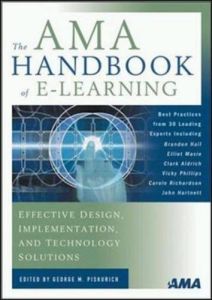Join getAbstract to access the summary!

Join getAbstract to access the summary!
George M. Piskurich
The AMA Handbook of E-Learning
Effective Design, Implementation, and Technology Solutions
AMACOM, 2003
What's inside?
First, be sure e-learning is right for your organization. Then focus on planning and creating a receptive audience.
Recommendation
If your organization is considering e-learning or if your management team thinks everyone needs to get on the e-learning bandwagon, you have been waiting for this book. Making the organizational transition to e-learning is a huge undertaking that affects almost every aspect of your company. This handbook, edited by George M. Piskurich, includes chapters by 30 experts in the field. It guides you through the process of establishing e-learning programs. It starts with needs analysis to see if e-learning is right for your business and then details a step-by-step approach for developing, implementing and maintaining an e-learning program. getAbstract.com highly recommends this volume; it is packed with useful, relevant, specific information, experience and guidance.
Summary
About the Author
George M. Piskurich is an expert on e-learning design and organizational training and development. He is also the author of The ASTD Handbook of Training Design and Delivery and other books related to learning. Thirty leading experts contributed chapters to this book.
















Comment on this summary